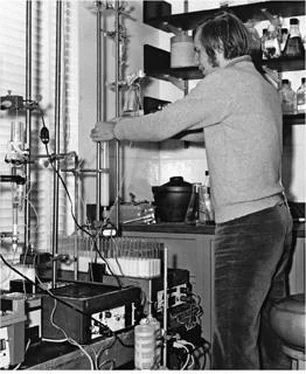James Watson - AVOID BORING PEOPLE - Lessons from a Life in Science
Здесь есть возможность читать онлайн «James Watson - AVOID BORING PEOPLE - Lessons from a Life in Science» весь текст электронной книги совершенно бесплатно (целиком полную версию без сокращений). В некоторых случаях можно слушать аудио, скачать через торрент в формате fb2 и присутствует краткое содержание. Жанр: Биографии и Мемуары. Описание произведения, (предисловие) а так же отзывы посетителей доступны на портале библиотеки ЛибКат.
- Название:AVOID BORING PEOPLE: Lessons from a Life in Science
- Автор:
- Жанр:
- Год:неизвестен
- ISBN:нет данных
- Рейтинг книги:5 / 5. Голосов: 1
-
Избранное:Добавить в избранное
- Отзывы:
-
Ваша оценка:
- 100
- 1
- 2
- 3
- 4
- 5
AVOID BORING PEOPLE: Lessons from a Life in Science: краткое содержание, описание и аннотация
Предлагаем к чтению аннотацию, описание, краткое содержание или предисловие (зависит от того, что написал сам автор книги «AVOID BORING PEOPLE: Lessons from a Life in Science»). Если вы не нашли необходимую информацию о книге — напишите в комментариях, мы постараемся отыскать её.
AVOID BORING PEOPLE: Lessons from a Life in Science — читать онлайн бесплатно полную книгу (весь текст) целиком
Ниже представлен текст книги, разбитый по страницам. Система сохранения места последней прочитанной страницы, позволяет с удобством читать онлайн бесплатно книгу «AVOID BORING PEOPLE: Lessons from a Life in Science», без необходимости каждый раз заново искать на чём Вы остановились. Поставьте закладку, и сможете в любой момент перейти на страницу, на которой закончили чтение.
Интервал:
Закладка:
With Wally Gilbert's and my students and postdocs on the Biology Department rhino in 1965
Though Mark's experimental design was elegant, making it work would be no cakewalk. Though he received hints of early success, these were cruelly followed by failures to spot a radioactively labeled protein. In the summer of 1966, virtually all of Mark's experiments were crashing while Wally and Benno provided mounting proof that they were looking at the lac repressor. Happily, Mark's world would brighten immeasurably through the sudden unanticipated arrival of my former Radcliffe tutee, Nancy Haven Doe.
Nancy had been intrigued by repressore ever since learning about them during my spring 1963 Biology 2 lectures. Until then, she had expected her life to be largely that of the wife of a social male, very likely Brook Hopkins, Harvard ‘63, whom she had met as a freshman and with whom she had persevered through five years of “understood engagement.” During her senior year, noticing Nancy's intellectual vitality, I strongly encouraged her to go to graduate school. Aiming her toward the best, I wrote to Rockefeller University's president, Detlev Bronk, in support of her admission. Perhaps because she had come to science so recently, Bronk did not take the bait. Nancy's fate instead became Yale, possibly pushed ahead by my recommendation letter describing her as a quick learner who happened also to be cheerful and pretty.
Nancy's first year in New Haven was a typical full load of four courses during both the fall and spring terms. She mastered the Schrödinger wave equation as well as many facts of chemistry that with luck she would never need to use. Eight straight A's left Alan Garen no choice but to accept her into his molecular genetics lab, where she wanted to go for the repressor. Soon, however, she realized Alan to be a man of few words, little time for mentoring, and an excess of caution. He told her he was not up to the repressor; it was too hard a problem for someone over thirty-five. The dull alternative he
proposed held little hope of sustaining and exciting her as a scientist. Writing to me early in March 1966, she remained resolute about resisting contentment in mediocrity. By late spring, she could take no more of her New Haven abode and decamped with an equally disenchanted aspiring female academic to the island of Mykonos.Upon coming back to the States, she feared that staying at Yale would condemn her to work in Bill Konigsberg's lab on dull, dull hemoglobin. In August, she wrote to me proposing to join Mark Ptashne's lab as his technician. There her three-and-a-half-year-long obsession to work on repressore could find a proper outlet. Only several days before, she'd visited Harvard and found Mark so clearly in need of intelligent help that he would forgive her several blessings of heredity including a six-inch advantage in height. Nancy found it infinitely more gratifying to work as a technician on the repressor than to be a graduate student not working on the repressor. Wanting my opinion about her potential new career, she made it clear she had not at any time been, nor ever would be, in love with Mark Ptashne. With that reassurance, I gave her my blessing.
Nancy nevertheless proved just the tonic Mark needed. With her methodically meticulous presence ensuring that he did not leave out essential experimental reagents, Mark could consistently detect the λ repressor and begin its molecular characterization. They soon showed that it was a protein of molecular weight near 30,000. Though Nancy at first believed Mark could win the repressor race, he knew otherwise. Wally and Benno were already writing up their paper, while he likely needed at least six more weeks in the lab before starting to write. Benno regularly came up to the fourth floor to check on their progress, much to Nancy's annoyance. She perceived his main purpose as gloating. Seeing Mark's always polite reception of Benno, however, Nancy managed an equal courage and grace. As for Wally, Mark so revered him that losing the race to him could never be devastating. Nancy's huge respect for Mark was no less evident: every day she went to the sandwich truck on Divinity Avenue to get his lunch, an egg salad sandwich, accompanied often by a chocolate eclair to fortify his morale.
Wally and Benno's paper “Isolation of the Lac Repressor” was submitted by me to the Proceedings of the National Academy of Science
(PNAS) on October 24,1966, just in time for publication in the December issue. If I had delayed its submission to let Mark complete the experiments needed for his paper, Wally and Benno's discovery would bear the next year's publication date. Mark would have preferred this, but I argued that no one would deem his work less important for appearing in print second. On December 27, “Isolation of the λ Phage Repressor” went off to PNAS, to appear in the February 1967 issue. Mark triumphantly announced the λ repressor isolation at a seminar in our lab's tearoom a month before the paper came out. The room was packed and during his moment of triumph (“I did it all alone!”) he never acknowledged Nancy's key role in his success. Afterward, I badly chewed him out. Instantly realizing he had been too full of himself, that evening he called Nancy to apologize and later sent her flowers.Mark and Nancy went on to test whether their repressor worked by binding to specific DNA sequences. When mixtures of radioactive λ repressor and λ DNA were centrifuged together in sucrose gradients they sedimented together. In contrast, mixtures of λ repressor and DNA from phage λ imm434 did not co-sediment. These much hoped for results were nonreproducible for an awful week until Mark realized that Nancy had inadvertently raised the salt levels in their mixtures. She nervously repeated the experiment using the original salt levels. The new results were just coming off the isotope counter when Nancy and Mark had to attend a seminar on the floor below. Halfway through the talk, the suspense overwhelmed her and she returned to the lab, where she quickly realized all was again well. She and Mark were for the first time ahead of Wally and Benno. Returning from the seminar, Mark shouted for joy, and they went into the halls to spread their good news. Going downstairs, they caught Wally and me about to leave the Biolabs. Upon learning that the experiment was repeatable, Wally's face turned ashen. Mark's overtaking him was not acceptable.
Over the weekend, Wally set about to do the analogous experiment using DNA from a phage Benno obtained from Jon Beckwith of Harvard Medical School that carried the ß-galactosidase gene and its control region. By Monday morning, Wally let it be known that he had preliminary positive results he intended to verify quickly, bringing
him again even with Mark and Nancy. Seeing Wally's intense competitiveness made Nancy feel as if she could never survive the male-dominated dog-eat-dog grind of being a scientist. It also was an eye-opener for Mark. His reverence for Wally had taken a big knock.But Wally's expectation of catching up to Mark and Nancy hit some skids. Holding him up were difficulties in purifying the radioactively labeled lac repressor. Though Mark gallantly held up his submission to Nature, intending to let Wally and Benno publish simultaneously, after two months they were not ready even to start writing, so he sent his paper in without theirs. Having been forewarned about Mark's submission, Nature's editor, John Maddox, sent it to the printer the day it arrived. “Specific Binding of λ Phage Repressor to λ DNA” appeared on April 15,1967, only six days after arriving in Nature's London office. Wally and Benno's paper “The Lac Operator Is DNA” was submitted on October 28 to PNAS, in time at least for publication in the same calendar year.
Читать дальшеИнтервал:
Закладка:
Похожие книги на «AVOID BORING PEOPLE: Lessons from a Life in Science»
Представляем Вашему вниманию похожие книги на «AVOID BORING PEOPLE: Lessons from a Life in Science» списком для выбора. Мы отобрали схожую по названию и смыслу литературу в надежде предоставить читателям больше вариантов отыскать новые, интересные, ещё непрочитанные произведения.
Обсуждение, отзывы о книге «AVOID BORING PEOPLE: Lessons from a Life in Science» и просто собственные мнения читателей. Оставьте ваши комментарии, напишите, что Вы думаете о произведении, его смысле или главных героях. Укажите что конкретно понравилось, а что нет, и почему Вы так считаете.












